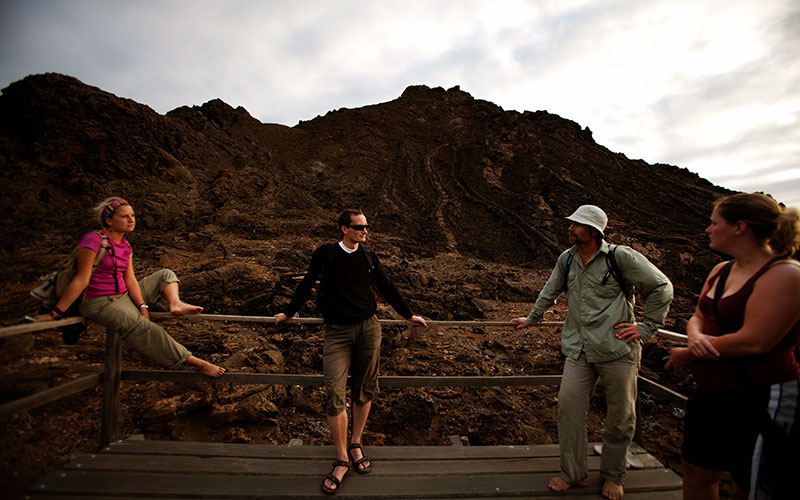Those responsible for the care of the Galapagos Islands have gotten serious about their upkeep. Recently, there have been many initiatives passed by the various institutions and agencies who care for the flora and fauna of the islands. One of the latest is the Galapagos Resident Course, a mandatory two-day course for anyone wishing to live and/or work on the islands.
Galapagos is not accepting any new permanent residents. In 1998, a law was passed granting permanent residence to anyone who had lived there for five years, or who did from that point on.
In other words, the last permanent residencies were granted in 2003 to those who had just moved there when the law took effect in 1998.
Now, only those who marry or are born to residents can get permanent residency.
Temporary residents must be sponsored by someone to work, and the sponsor must guarantee the cost of a return flight to the mainland for their employee. Also, employers must first prove that there is no one in Galapagos who can do the job that is being hired.
All residents must take the course, which is six hours long over the course of two days. It includes visits from most of the major institutions involved in the care of the islands, including the Galapagos park service, The Charles Darwin Foundation, representatives of the municipal recycling program, CIMEI (in charge of eliminating and preventing introduced species) and SICGAL (in charge of the Galapagos quarantine designed to keep out harmful plant species). Each puts on a brief presentation dealing with their specialty: for example, the SICGAL representative talks about what is allowed in Galapagos in terms of produce.

The course covers many topics in such a short time: here are some of the highlights.
- Coverage of the various constitutional statues that govern residency restrictions in the islands
- History of Galapagos and interesting facts (97% of the island land mass is protected!)
- Definition of protected areas, and how Galapagos is protected
- How to recycle trash in the islands, and what is done with each type of trash
- All about introduced animal species and what is being done to control them (130,000 goats removed from Isabela Island in the last few years!)
- What sort of food you’re allowed to bring into the islands (for example, you are allowed to bring in fresh green peppers but not spicy jalapeños)
After the course, there is an exam: if you want to stay in Galapagos, you must score 70% or higher. According to the instructors, most pass: the course is designed to educate residents, not weed them out.
All in all, it’s a laudable effort to try and increase awareness for those wishing to live and work in the islands. Instructors say the course is working and that there has been an increase in awareness and usage of recycling since it began.

